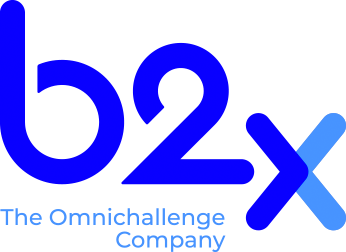Choosing a software platform is one of the most important steps in setting up an e-commerce channel.The market offers numerous solutions suitable for a range of marketing needs. Let's see some numbers to get an idea of the market and understand which are the most common.

As of March 26 2021, there were 152,086 online shops in Italy.

There are many differences between the various solutions available. However, it is important to distinguish between SaaS (Software as a Service), Open Source platforms and Custom platforms.
SaaS is part of cloud computing. i.e. software that exists on servers in the cloud and can be used as a service per se, without the need for specific installations or development.
These solutions are developed by companies that offer their services by subscription or other commercial formats.
One of the best-known SaaS platforms is Shopify, which has an increasingly strong market presence.
Benefits
- Ready-to-use software
- Clear costs included in the subscription
- Basic features available immediately
- No upgrade costs
- Security policy provided by the software developer
- Simple management
- Availability of numerous graphic templates
- Guided installation process
Areas for caution
- Complexity in the development of customisations
- New features and developments are decided by the service provider
- Payment systems are often linked to the platform
- Ongoing subscription costs increase as turnover grows
What is an Open-Source platform?
An Open-Source platform is a platform whose source code is public.
Platforms of this type have no license costs and are followed and supported by a large community of users / developers.
The fact that there is no license fee does not mean there are no other costs.
The most popular Open-Source platforms include:
- Magento
- PrestaShop
- Woocommerce.
Benefits:
- Broad base of developers available
- Availability of many additional modules to integrate specific features
- No license fees
- Free choice of payment systems (no additional costs on transactions carried out)
- Highly active community to report bugs and / or security problems
- Complete freedom of customisation
Focus: is Open-Source free?
The software itself is free; the "cost" is the work required to:
- Install and set up the platform
- Customise the features
- Customise the layout in terms of UX / UI
- Develop or customise a graphic theme to "dress up" the platform
- Integrate the necessary systems (company ERP, warehouse / logistics systems, CRM systems)
- Ordinary and extraordinary maintenance (security patches, major software releases)
Focus: WooCommerce
WooCmmerce is the world's most popular CMS e-commerce solution: WordPress. It is used by small businesses which use the CMS for their websites, to which they have added electronic shopping cart features.
What is a Custom platform?
Custom platforms are platforms belonging to companies or agencies, which allow use of the platform on payment of a fee or license. The source code is owned by the company. Use of the platform is transferred to the client. Such platforms are developed for customisation in line with the client's needs.
Custom platform
What is a Custom platform?
Custom platforms are platforms belonging to companies or agencies, which allow use of the platform on payment of a fee or license. The source code is owned by the company that develops the software and transfers its use to its clients. These are extremely powerful platforms which can be developed to meet all the client's needs.
Benefits:
- Extremely powerful and created ad hoc for the client
- Support from the owner company
- Ability to manage every aspect of the platform
- Additions can be developed ad hoc
- Ability to scale platform capabilities as business grows
Areas for caution:
- High development costs
- Fairly long implementation times
- Ongoing ties to the software provider
- No code ownership
How to choose your solution
It is important to have an idea of the business you wish to develop, in both the short and medium term. What kind of turnover objectives do you set?
On the basis of these answers, you can decide how much and, above all, how to invest as well as think about the features and specifications that will characterise your e-commerce site.
As we have seen, there is no one-size-fits-all solution, but fortunately the market offers a range of options.



 April 18. 2022
April 18. 2022 




